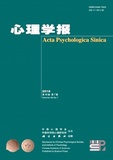|
|
Affective diathesis of Chinese contemporary graduate students
LU Jiamei, LIU Wei, HE Wen, WANG Junshan, CHEN Nianqu, XIE Dengfen, LEI Kaichun
2018, 50 (5):
528-538.
doi: 10.3724/SP.J.1041.2018.00528
Affective diathesis refers to an individual’s emotional psychological quality. It is a series of relatively stable psychological traits that are formed from the combination of both genes and the environment. In recent years, China's graduate student enrollment has increased each year. However, few studies have examined graduate students’ affective diathesis. A large-scale research study on the affective diathesis of Chinese contemporary graduate students is a significant, though challenging, endeavor. We analyzed affective diathesis of Chinese contemporary graduate students and its influencing factors using the self-developed “College Students’ Affective Diathesis Questionnaire” and “Affecting Factor Inventory.” The college students’ affective diathesis questionnaire has six sub-questionnaires (moral affection, rational affection, aesthetic affection, interpersonal affection, life affection, and emotional intelligence), including 33 different kinds of affects. The affecting factor inventory has 35 items in personal, family, school, and social respects. The questionnaires were administered to 10,056 graduate students from 51 colleges and universities in 14 major cities (Beijing, Shanghai, Nanjing, Guangzhou, Changchun, Zhengzhou, Xi'an, Wuhan, Xining, Lanzhou, Guiyang, Nanning, Haikou, Kunming, and so on). The geographical regions included well-developed, developing, and less-developed regions in China. The results revealed the following. First, the affective diathesis of Chinese contemporary graduate students is generally positive. The development levels of life affection and moral affection were relatively high; the development levels of interpersonal affection, aesthetic affection, and emotional intelligence were relatively low. For the specific affections, the development levels of patriotism, responsibility, credibility, self-reliance, self-esteem, achievement, aesthetic for nature, and emotional understanding ability were relatively high; the development levels of integrity, forgiveness, aesthetic for humanity, and emotional expression ability were relatively low. Second, the results revealed that there was a structural difference between males and females. The development levels of integrity and exploration for males were higher than those for females; the development levels of intimacy, emotionally appealing, gratefulness, self-esteem, cherish, aesthetic for nature, and aesthetic for deportment for females were higher than those for males. Additionally, those who received awards had higher levels of affective diathesis, including all of the six sub-affections and nearly all of the specific affections. Further, the development levels of exploration and aesthetics for science in students majoring in science were higher than those for students majoring in liberal arts. Third, the factors that influence the development of affective diathesis in the graduate students fell into four categories: individuals, families, schools, and society. Sound moral values, more public awareness, strong interpersonal relationships, high self-expectations, and so on had a positive impact on graduate students’ affective diathesis. Finally, graduate student's development levels of public benefit, self-improvement, exploration, learning happiness, major interest, self-confidence, aesthetic for humanity, and aesthetic for science were higher than those of undergraduates. Further, the negative influence of school pressure and time spent online on affective diathesis in undergraduate students was greater than it was in the graduate students. The results from this investigation provide educators with abundant first-hand information on how to improve graduate students’ affective diathesis, as well as for academics on the theoretical implications for affective diathesis research.
Related Articles |
Metrics
|




